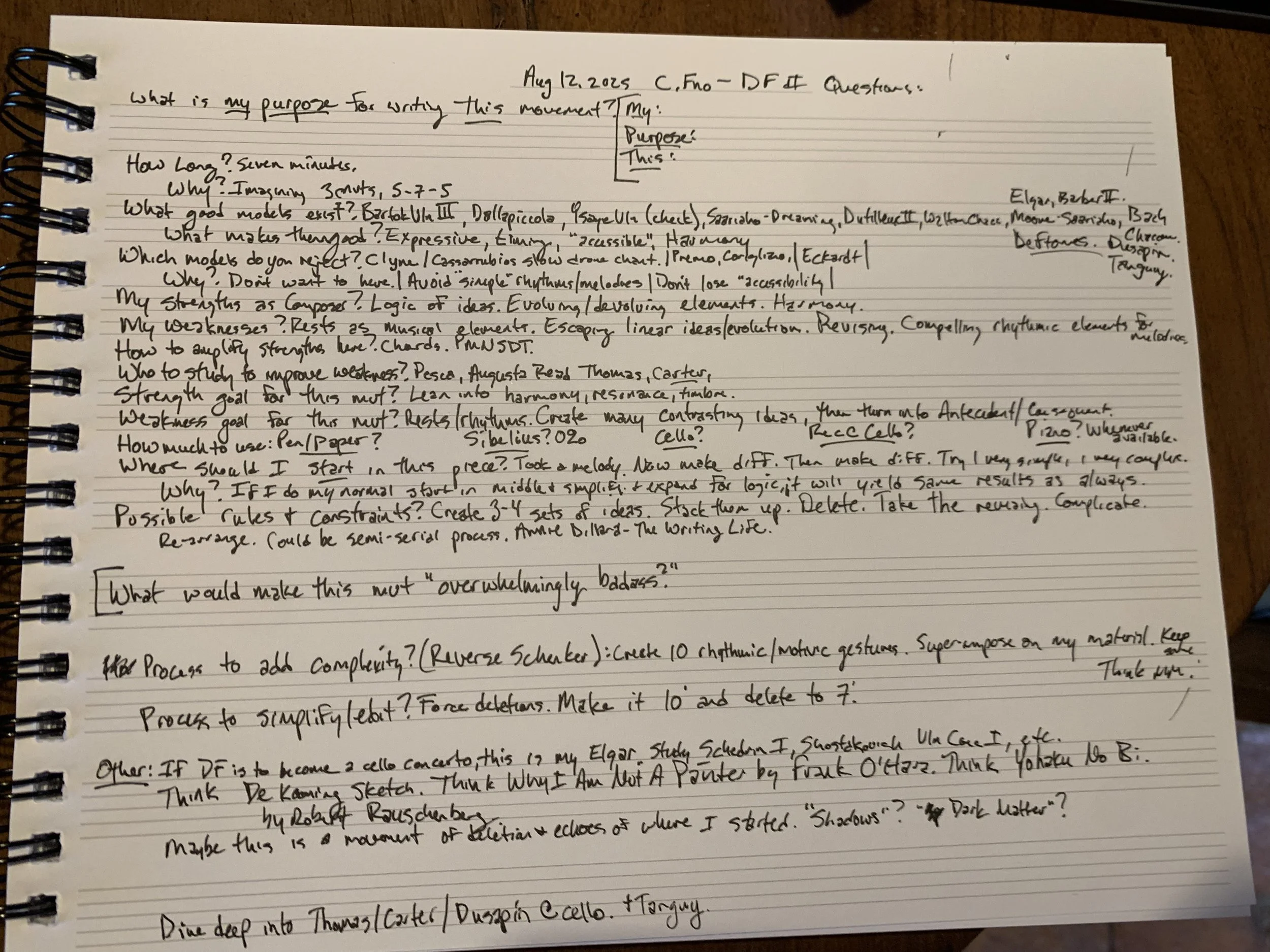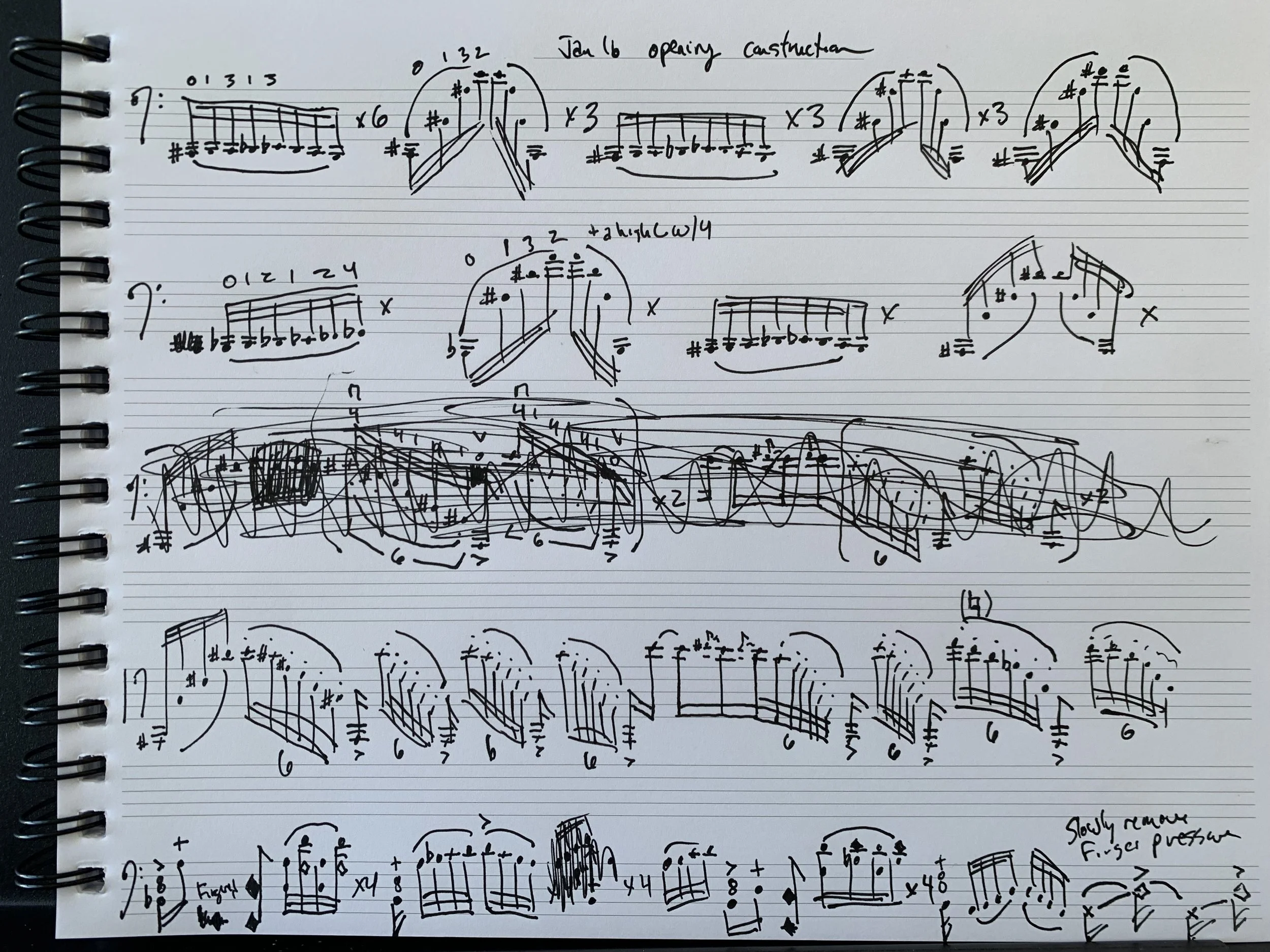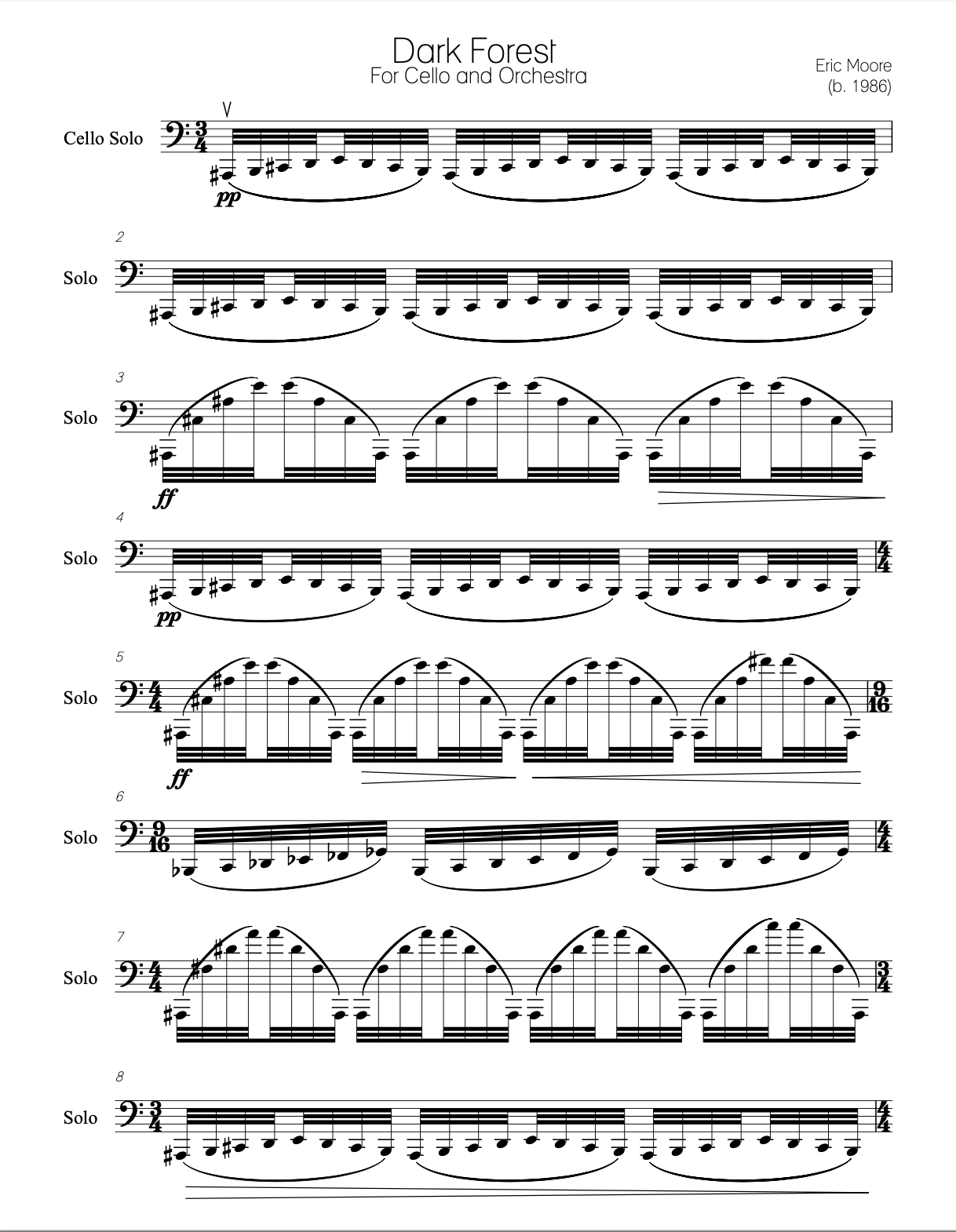Update 1 - February 6, 2024
Pages 3 and 4, swerve to unaccompanied cello piece
I did some sketching last week and then today wrote a few more pages. I think that this should probably be a solo cello piece, though I sketched orchestral fragments as well. I might use this as the basis of the cello concerto, but I started playing it and realized I’d like to perform it regularly… tough to do when you need a whole orch to back you up
I finally found a path to recall m. 11’s bird calls, which is where I ended the material.
I know I’ll have to reconfigure the unexpected groove section on page 3 with the low Bb’s. It becomes “too predictable” which is what a groove is, but since I’m going to pick up a more interesting groove right where I left off at the bottom of page 4, I’ll write that one, then head backwards and re-think how long page 3’s should be.
Haven’t bothered to add dynamics or change the slurs to the correct version at the top of page 3, but all of that was clear when I wrote it so it’s clear in my head. I’ll proof later. I also think I’ll take out the redundant line at 68. And I suspect I may truncate that recap even more.
I like that 61 recapitulates the opening but with the end of the groove material in place of the chords. I’ve been wondering if the pitch material from those chords should become the basis of the next section…
I think I know where it should head from here and I’m planning to take inspiration from Nicholas Deyoe’s Still Getting Rid Of (Audio of premiere) which we premiered with La Jolla Symphony in, gosh, 2011… and also from the last section of Michael Gordon’s Industry (YT, Ashley Bathgate). I may use increasingly high harmonics on A and D for the chords’ pitch content (but played in their more piercing range close to the top of the string instead of their mirror image, nicer-sounding range at the bottom of the string), or I may use those opening chords like I mentioned.
Which means that likely I will go back and re-do the pitch material of those opening chords, so I’m not getting super attached to them and frankly think one or two things about them are weird. I had thoughts of pulling in the high A to high C in m. 7 but haven’t yet, so the range just feels arbitrarily wide. Maybe m. 12 is more impactful if that’s the first time we’ve heard something higher up, setting us up for the harmonics to be even higher in 13.
Then, at the end of the new, more aggressive groove I’ll go into this harmonic pizz technique on the top two strings shown at the bottom of page 4 (from the… unique… way I play the Berio Sequenza) and I’ll have Sleep Token-inspired col legno rhythmic stuff on the bottom two strings.
My intention is not to overthink the rhythmic stuff or the aggressive chords. And then to go back and formally study Gerard Grisey’s Vortex Temporum (YT, pretty good performance), making my first round of official edits at that point.
A few intentional deletions from the score, but more or less the tune starting at m. 13 (from page 2, below)
















